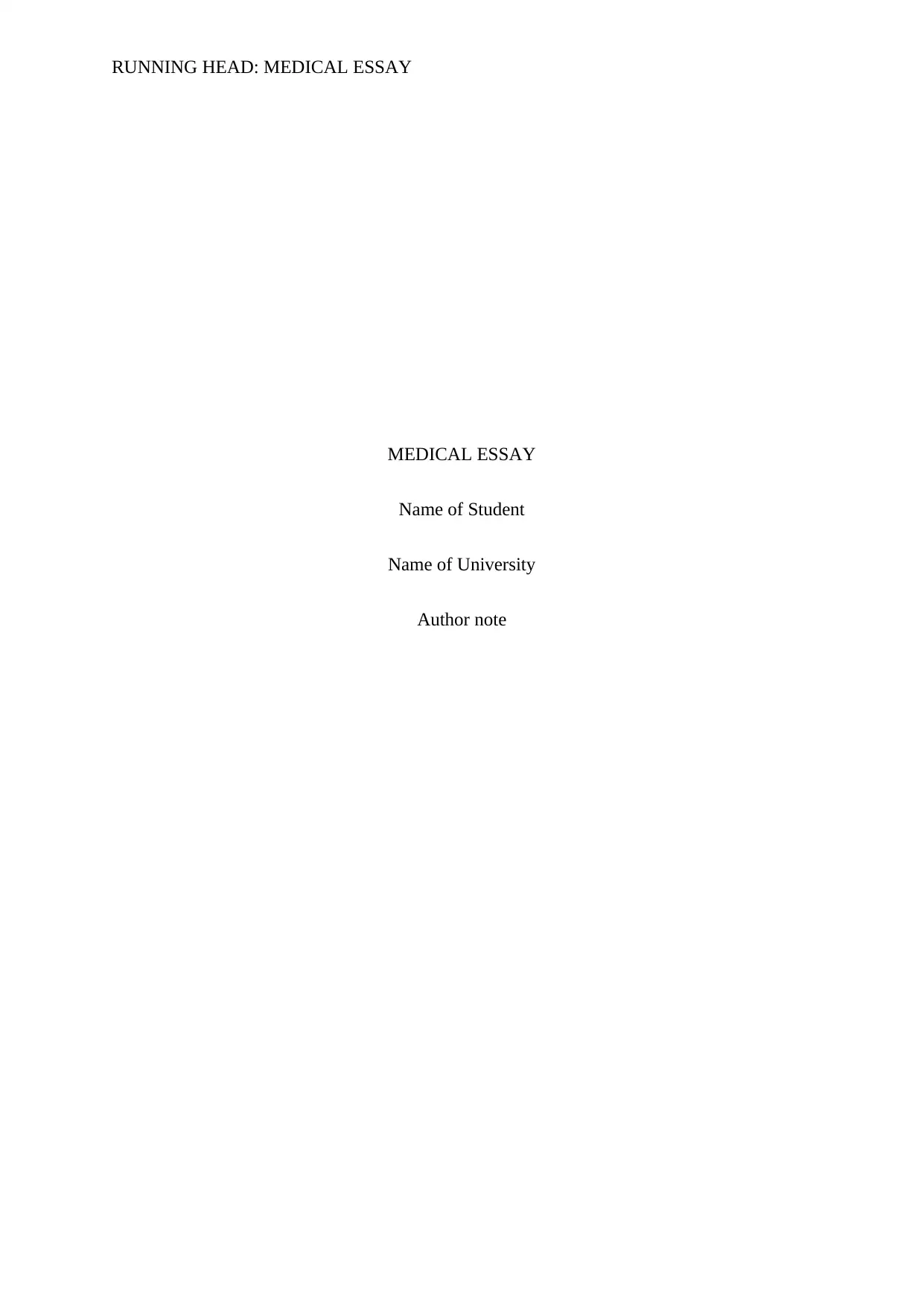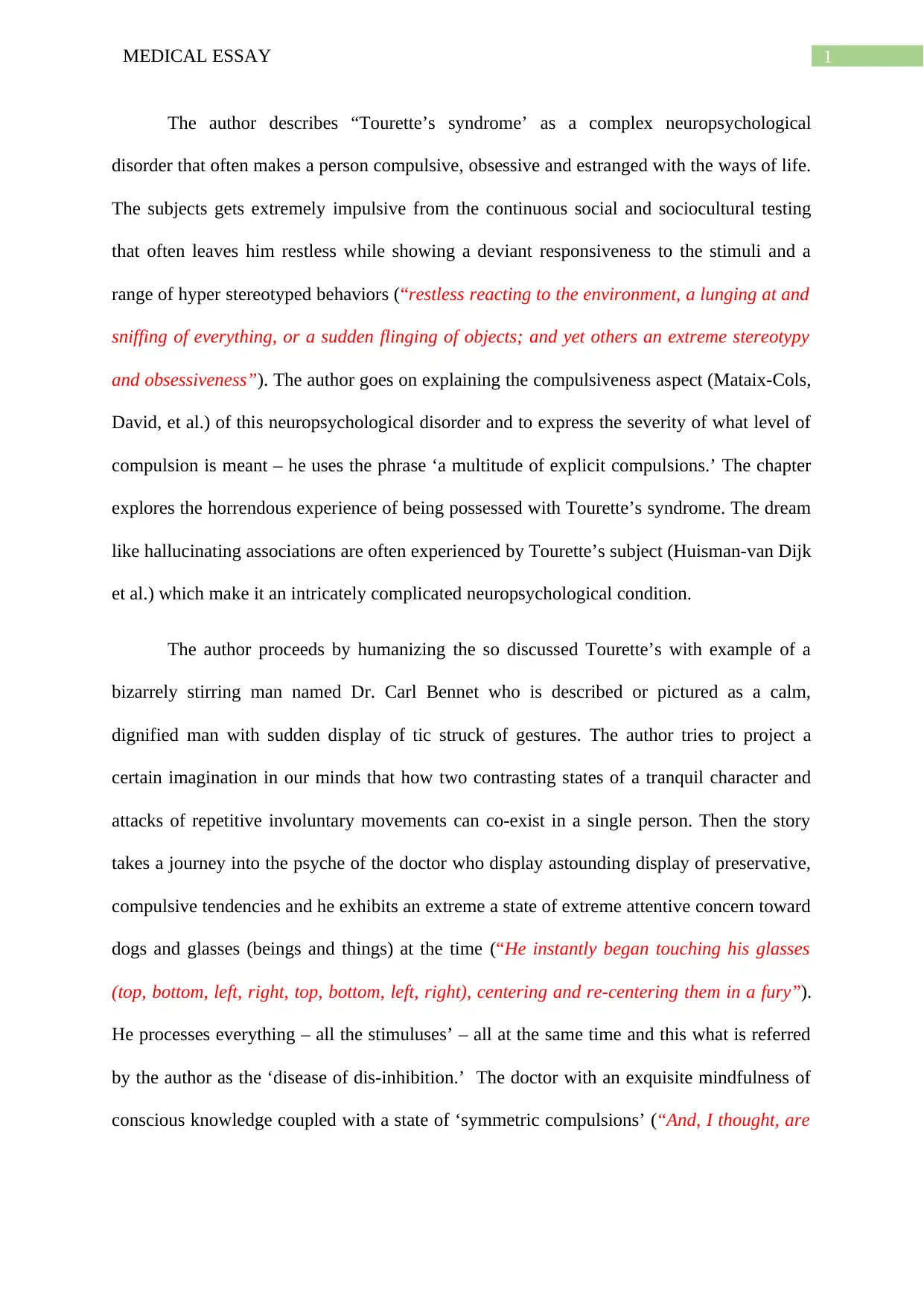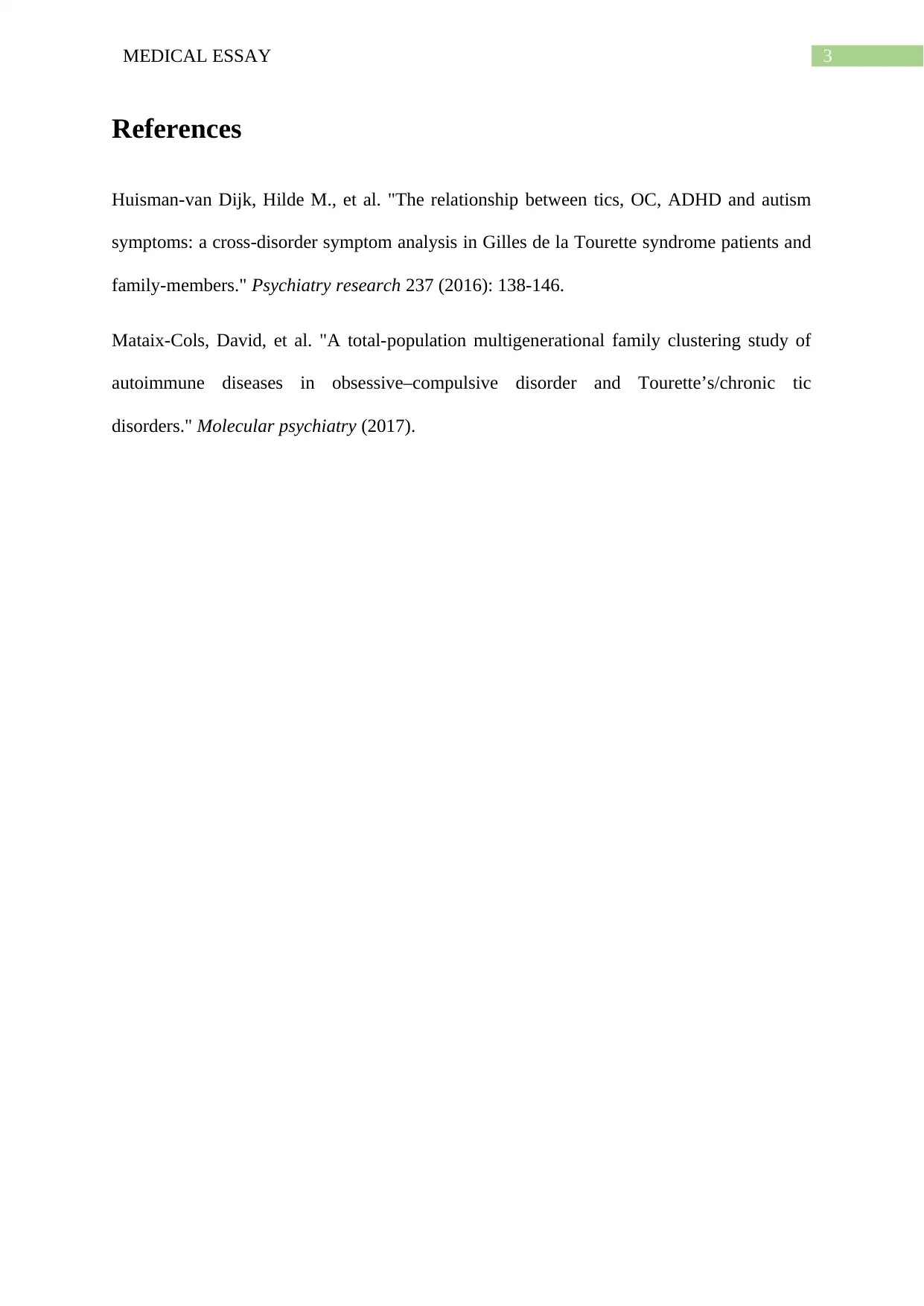Analysis of Tourette’s Syndrome: A Medical Essay Exploration
VerifiedAdded on 2023/03/30
|4
|437
|259
Essay
AI Summary
This medical essay delves into the complexities of Tourette's Syndrome, a neuropsychological disorder characterized by compulsive behaviors and tics. The essay explores the impact of the disorder on individuals, highlighting the challenges of social interactions and the experience of dis-inhibition. It references the work of Dr. Carl Bennet, portraying the co-existence of a calm demeanor with repetitive involuntary movements. The essay examines the doctor's obsessive tendencies, specifically his concern for dogs and glasses, as an example of the disorder's impact. The author references relevant studies to support the analysis of the syndrome. The essay explores the experience of the syndrome by the subject with the help of the author to portray a real-life scenario, which allows the reader to develop a deep understanding of the disorder and its effects on the affected individuals.
1 out of 4





![[object Object]](/_next/static/media/star-bottom.7253800d.svg)